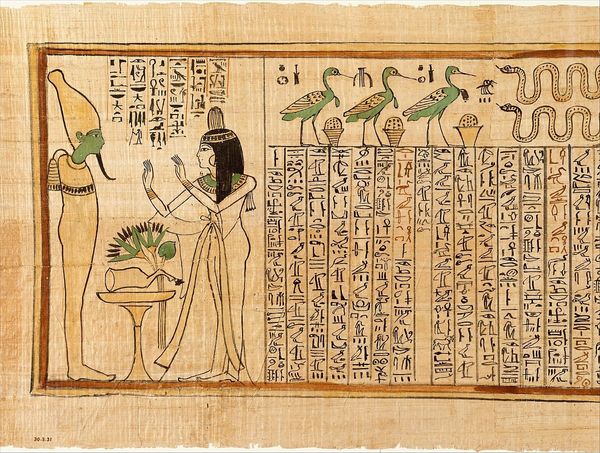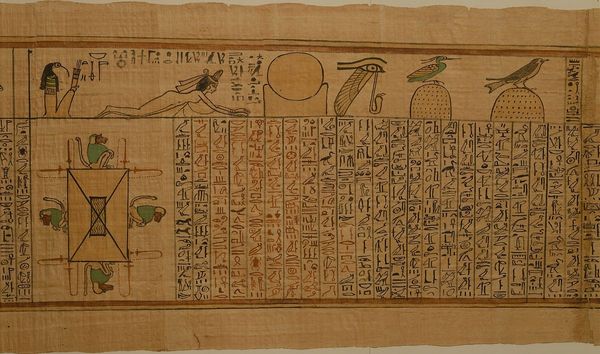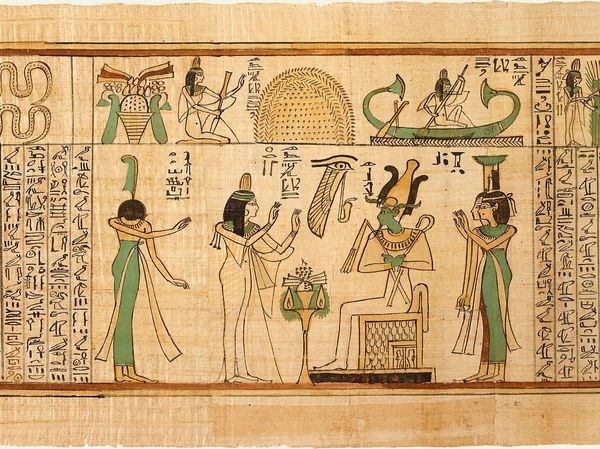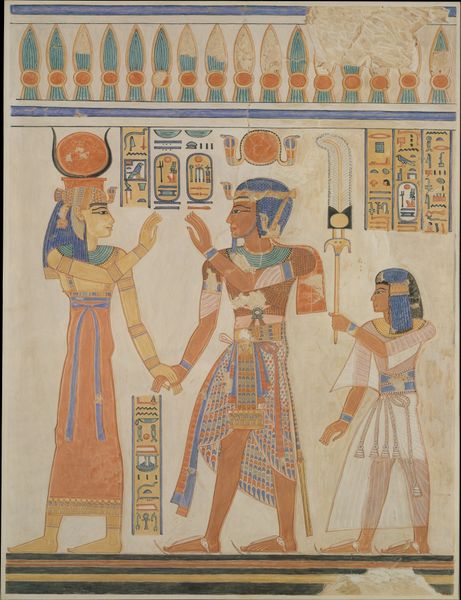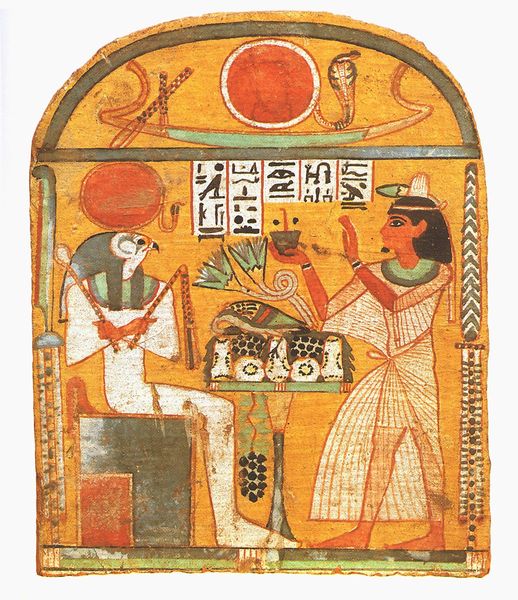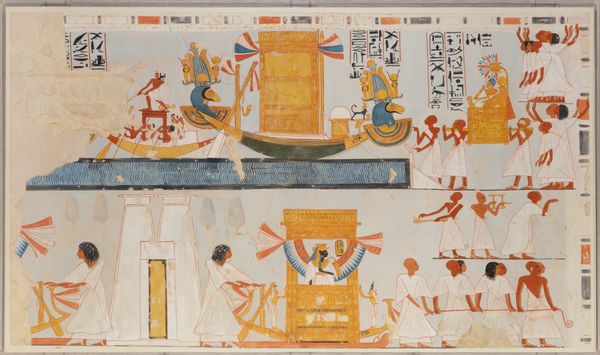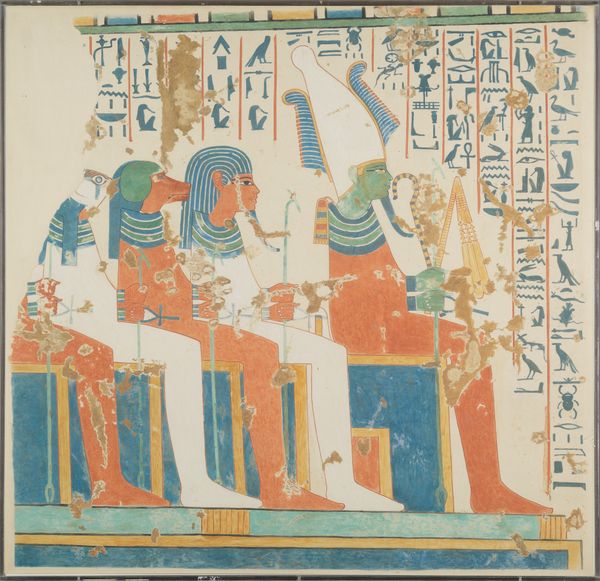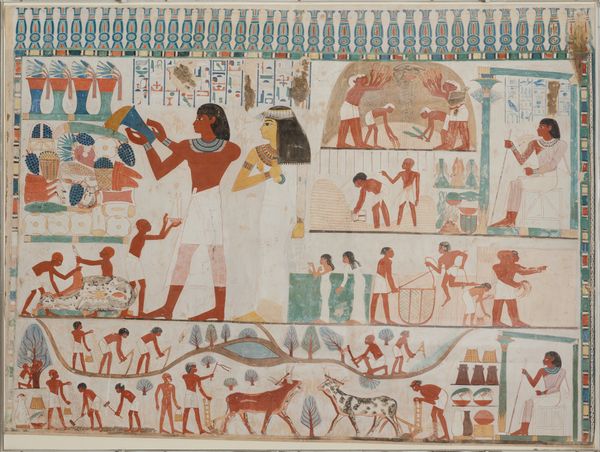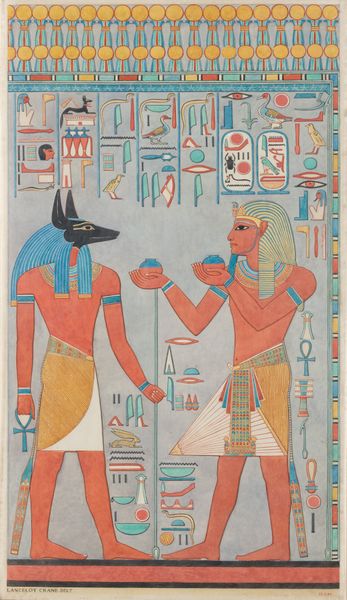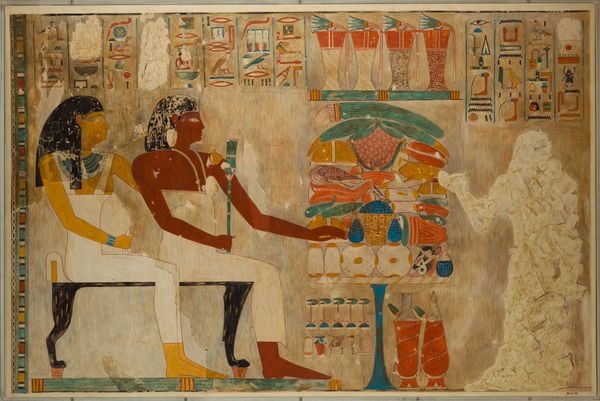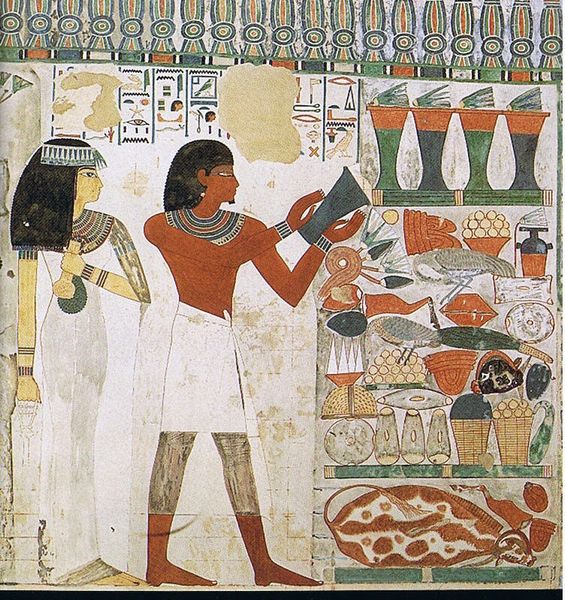
Nany Offering Prayers, beginning (Book of the Dead for the Singer of Amun, Nany) 1050 BC
0:00
0:00
drawing, paper, ink
#
drawing
#
ancient-egyptian-art
#
figuration
#
paper
#
text
#
ink
#
coloured pencil
#
ancient-mediterranean
#
history-painting
Copyright: Public domain
Editor: This is a page from the "Book of the Dead for the Singer of Amun, Nany," dating back to 1050 BC. It’s a drawing in ink on papyrus, showcasing Nany offering prayers. The sheer density of symbols and the careful composition are striking. What do you see in this piece, particularly considering its visual language? Curator: It's fascinating how potent these images remain. Consider the continuous visual vocabulary spanning millennia, and how the images of offering and the standing female figure have accrued meanings over time. Nany is represented as someone making offerings, which carries echoes from even older fertility or votive figures. What about the placement of the hieroglyphs - how do they resonate with you? Editor: I notice how they're not just decorative, but integral to the scene. They seem to frame Nany and guide our eyes, like a written form of prayer, maybe? Curator: Precisely. They are more than mere labels; each hieroglyph encapsulates layers of cultural memory and encodes the narrative within the image. They signify power, protection, or even act as a symbolic offering in themselves. Have you considered the colors employed here? Editor: The colors seem muted but deliberate – green, black, the tan of the paper. It makes me wonder about their significance in the culture and the context of death. Curator: Those colors, even in their restraint, held immense symbolic weight. Green represented regeneration and rebirth, black associated with the fertile silt of the Nile. Together, they illustrate the promise of renewal within the cycle of death and resurrection, so integral to Egyptian belief. Considering that, how might the prayers influence that journey? Editor: It is interesting how images and language become powerful instruments when unified. Thank you, it provides another avenue to interpret cultural context with art. Curator: And thank you, it enriches the experience by delving into cultural memory, bridging present with past through potent, enduring images.
Comments
No comments
Be the first to comment and join the conversation on the ultimate creative platform.
